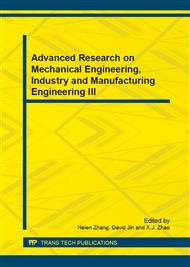p.150
p.154
p.163
p.167
p.172
p.176
p.180
p.184
p.189
Synthesis and Application of Carbon-Based Nanocomposites
Abstract:
Lithium ion batteries have been considered as the most effective and practical technologies for electrochemical energy storage. To meet the demand for lithium ion batteries with high energy density and excellent cycle performance, numerous efforts have been devoted to the development of new electrode materials. Electrochemically active metal oxides have emerged as the most promising candidates for the anode materials in the next generation lithium ion batteries duo to their high theoretical capacities and natural abundance. However, the extremely high volume change induced by the alloying reaction with lithium in the bottleneck for the commercialization of these materials. To overcome these obstacles, carbonaceous materials are commonly introduced as matrices to absorb the volume changes and improve the structural stability of the electrode materials. Hence, the present article describes the synthetic pathway of carbon-coated nanomaterials and applications.
Info:
Periodical:
Pages:
172-175
Citation:
Online since:
August 2013
Authors:
Keywords:
Price:
Сopyright:
© 2013 Trans Tech Publications Ltd. All Rights Reserved
Share:
Citation:


